|
Here, we look at a number of updates from AFAE members, focussed on activities occurring across 2020 and into 2021. Read on for updates from Ros Bandt, Vicki Hallett, Tristan Louth Robins, Jesse Budel, Clare Hall and Anthony Magen:
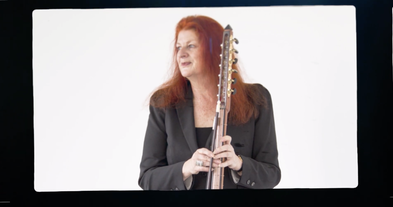
Australian Art Music Awards:
Ros Bandt receives Distinguished Services to Australian Music Award As part of the 2020 Australian Art Music Awards, AFAE member Dr Ros Bandt has received an award for Distinguished Services to Australian Music. The oration for her award outlines her "compelling contribution to Australian music": "If it is the task of an artist to transcend her medium, then Dr Ros Bandt is an exemplar in her field. As composer and sound artist dedicated to intercultural acoustic improvisation, she has created a globally-recognised body of work over four decades. Whether working in the ancient cities of Crete or in the Australian bush, working with First Nations peoples or in other cross-cultural collaborations, she has made a unique career showcasing her liminal sonic compositions. Dr Bandt's first environmental recording was made in a water tank in 1979, using a reel-to-reel tape recorder, a length of sewer pipe, a gong and a Renaissance recorder. As her oeuvre developed, she implemented electroacoustic sound fields, electronic instrumentation and acoustic sculptures. A superb instrumentalist, she adopted the tarhu, a hybrid-string instrument developed in Australia, to further augment her compositions. Dr Bandt's academic career is significant, and the book, 'Sound Sculpture', is a seminal book in her field. She directs the Australian Sound Design Project at Melbourne University, has taught sound art at the VCA and RMIT and advanced improvisation at the Box Hill Institute, and is in demand as a keynote speaker. The first woman to be awarded the Don Banks Music Award in 1991, she has also won the inaugural Benjamin Cohen Peace Prize and the Sound Art Australia Prize, funded by the ABC and Goethe-Institut. Dr Bandt is an inspiration to those who pursue art as a measure of worlds that would not reveal themselves to us unless someone first opened them up for inspection." A comprehensive overview of Bandt's work can be read in Linda Kouvaras' AMC article, 'Ros Bandt: Sound-Sculptor/ Poet-Protector/ Crusader of the Land'.
Vicki Hallett: Habitat and Barwon Listening (with Ros Bandt)
Habitat is a creative project by three Australian musicians - AFAE Member Vicki Hallett on woodwinds and loops, Jeremy Alsop on bass, strings and laptop and Steve Falk on marimba and percussions - with Jem Savage as sound engineer and video by Marie Pangaud. The project uses recordings of elephant vocalisations from Cornell Lab's Elephant Listening Project as its main source material.
This concert recording captures one of the last live Australian music performances before COVID-19 caused the industry to shut down. It is the culmination of a creative project between three musicians who share a passion for using the sounds of the environments of endangered species to highlight their plights through innovative performances employing the universal language of music. A Facebook Live stream of the performance on World Elephant Day, August 12, featured an introduction by Vicki Hallett, Jeremy Alsop, Leah Barclay and Rachel Morley. The Habitat project shares a listening experience which invites you to immerse within the environment of the Forest elephant in Africa. The listener is invited by the Call of the Forest to enter the Central African forest, gather some leaves and collect honey. Further down the trail, and if all goes well, you just may encounter the endangered African forest elephants. The Habitat EP, released on World Elephant Day, is available for purchase at https://habitat3.bandcamp.com/album/habitat. 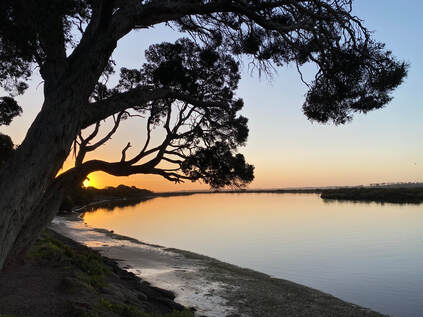 Barwon River at Sunset. Photo by Ros Bandt. Barwon River at Sunset. Photo by Ros Bandt.
Barwon Listening: seawater/freshwater - What do we hear? Ros Bandt and Vicki Hallett are two sound artists and musicians passionate in their interpretation of the environment through sound. Their creative works are derived from original recordings and research of habitat. Barwon Listening focuses on sensing the Barwon River in Victoria, Australia. Exploring the river from their kayaks, using hydrophones and other recording devices, Bandt and Hallett will track the River from the Otways to the estuary where freshwater meets saltwater. How many species of fish, eels, underwater insects, seagrasses, crustaceans and birds are having dialogues we can’t usually share? Many little-heard sounds will be uncovered and woven into new sonic creations: what does it feel like to be in the sound world of a mangrove, a seal, a pelican? These river experiences will become exploratory artworks attuned to the river itself. Works will be shared through live performances, installations and online through the Hearing Places website: www.hearingplaces.com 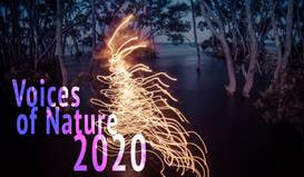 Kayak exploration. Photo by Ros Bandt. Kayak exploration. Photo by Ros Bandt.
WHY SOUND? WHY LISTENING?
Sound is a powerful indicator of what is happening in a given space, its life and health. Listening, tuning in to what is around us, informs us of presence & absence, the behaviour and interrelationships of living things. Being together, reflecting and creating, Sensing Sound duo gives value and respect to the habitat, what has gone before, what we hear now and how it inspires musical creativity. This project uncovers and celebrates many little-heard sounds in unique ways for all to share. Listening is immersive, requiring attentiveness. Sound-sensing eclipses science and art in different ways every second. Did you hear it? 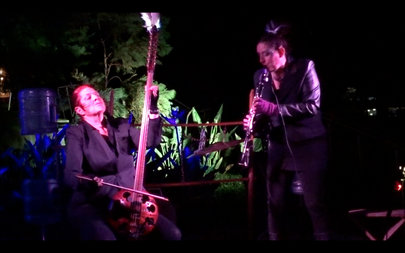 Sensing Sound, Ros Bandt (left), Vicki Hallett (right). Photo by Arthur McDevitt. Sensing Sound, Ros Bandt (left), Vicki Hallett (right). Photo by Arthur McDevitt.
“Sensing Sound” duo, Ros Bandt and Vicki Hallett, brings together two creative environmental sound artists and performers who probe nature-human relationships in outdoor and indoor contexts. Each installation and performance is an organic osmosis of audible, visual, sculptural and performative elements rendered from the site itself. They have collaborated for the last four years, creating original environmental site-specific spatial sound works, commissioned twice by the City of Greater Geelong for Geelong After Dark (GAD) creating the night works Earthscape 2018 and Human Aquarium public installation (2019) joined by collaborator Jem Savage, creative sound designer.
Bandt and Hallett have performed at SeenSound, the Loop Bar, New and Experimental Arts Laboratory (NEAL), the Tate Gallery, Fryerstown and devised interactive multichannel audience participatory concerts and exhibitions such as Freshwater Listening to celebrate 10 years of acoustic ecology in Australia. Both artists, individually and together are key players in acoustic ecology, biodiversity, and underwater and wildlife recordings, continually sensing the environment through sound in unique spaces, from Africa (Hallett), to Greece (Bandt) and beyond. The Barwon River is their common home ground where they share a special attachment, individually and together. 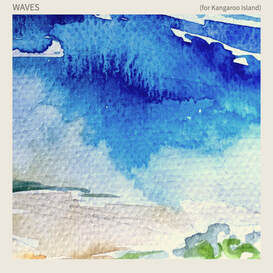
Member Update: Tristan Louth Robins
Following the devastating impact of bushfires around Australia in early 2020, a number of AFAE members have responded in the aftermath with soundscape works. AFAE Member Tristan Louth Robins curated a charity album, Waves (for Kangaroo Island), to raise funds for the recovery of the Kangaroo Island community in South Australia. Alongside this, Tristan has also included recordings made on the island in October 2019 on his Fleurieu and Kangaroo Island Sound Map, documenting soundscapes at Flinders Chase National Park and Hanson Bay prior to the fires.
Tristan explains more recent activities in his own words:
"Following the devastating bushfires of 2020, I returned to Kangaroo Island for a few days in September 2020 and documented soundscapes of Flinders Chase National Park and Hanson Bay, as well as other regions of the island for the Fleurieu & Kangaroo Island Sound Map. With a fairly open schedule for 2021, I’m keen to concentrate my research activities around the Fleurieu Peninsula. Over the 2020-21 summer I’ve been documenting the soundscapes of Lady Bay. With its intricate networks of reefs, sea grasses, fish and crustacean species, it’s a pristine coastal environment that I’m looking forward to investigating further, with recordings to be shared on the sound map in the near future. In terms of local engagement, I’m progressing plans to invite Fleurieu communities to a series of sound walks and recording workshops in and around the township of Normanville and Myponga Reservoir. These should hopefully eventuate by mid-2021. Away from the Fleurieu, my new permanent installation, Sternere is open to the public at the Barossa Adventure Station in Angaston, South Australia. Lastly, in recent months I’ve been doubling down on learning data science and I’ve just launched a blog, Wrangling In The Antipodes, which will examine environmental and acoustic ecology datasets through exploratory data analysis (i.e. lots of visualisations.)"
Jesse Budel
In mid-2020, Jesse joined the WFAE Executive as the new WFAE Secretary. Over the past half-year, various tasks have included included engagement with new affiliates in the US Midwest and Mexico, reconnecting with existing regional affiliates, holding the WFAE’s first-ever online board meeting, reviewing and updating WFAE bylaws first written in 1998, preparation of the WFAE’s Library and ongoing archival activities. More recently, Jesse released a new album entitled Cathedrals, featuring recordings from three Australian sites in or near UNESCO Biosphere Reserves. In part inspired and in part assisted by Leah Barclay’s ‘Biosphere Soundscapes’ project, the recordings document three locations: - Mary Cairncross Scenic Reserve on Jinibara Country (QLD), in the region of Noosa Biosphere Reserve - Wamoon/Wilson’s Promontory on Koori Country (VIC), site of Wilson’s Promontory Biosphere Reserve - Pukumako/Calperum Station on Meru Country (SA), site of Riverland Biosphere Reserve Click the Bandcamp link below to access the full album and find out more: 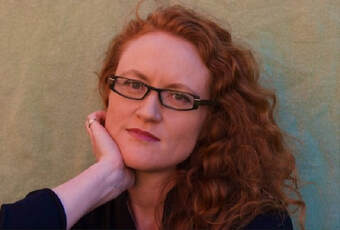
Member Profile: Clare Hall
Clare Hall (PhD) is Lecturer in Performing Arts, Monash University, Australia. Her research, educational and artistic practice coalesces around music, sound and performance to promote social justice through creative arts engagements. Her interdisciplinary scholarship bridges boundaries between the arts, education, and cultural sociology, with her key contribution to date in music and gender. This is the subject of her book Masculinity, Class and Music Education (2018), which aims to understand the social factors that affect young children’s musical identities. Clare’s scholarship draws on her background as a musician, dancer, performer, school-based and community-based teacher. This drives her work with pre-service and in-service teachers, school students and the wider community that aims to orchestrate democratic social spaces for creativity and community strengthening across the lifespan. Her critical pedagogies incorporate acoustic ecology to facilitate more meaningful listening and embodied engagements with the performing arts, the environment and each other. She experiments with sound walking, scaping, foraging, sound and movement improvisation and storying, which intersects with her research expertise in narrative, ethnographic and digital methods. She is currently working with colleagues on Greek music educators’ experiences of urban soundscapes in Corfu as part of the European project the Soundscape We Live In 2019. She is also working on troubling audism and ableism through deaf music-making in pandemic times. Clare is passionate about the part listening, sonic arts, and music making can play in decolonising music education, which she brings to her role as Co-founder/Leader of the Decolonising and Indigenising Music Education special interest group of the International Society for Music Education. For info go to: https://www.facebook.com/groups/ISMEDIME/  Image by Denby Smith Image by Denby Smith
In Situ Poetics: An Essay on Soundwalking in Melbourne
Poet, audio producer and literary/media scholar Prithvi Varatharajan recently published an essay, In Situ Poetics, in the Sydney Review of Books, recounting the experience of leading several soundwalks in Melbourne with AFAE member Anthony Magen, exploring the evolution in the city's soundscape from indigenous perspectives and early colonial era diaries through to the present day. You can read the full essay on the Sydney Review of Books website.
0 Comments
Leave a Reply. |
Categories
All
Archives
April 2023
|

 RSS Feed
RSS Feed